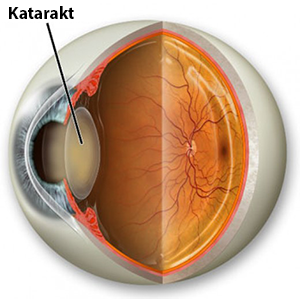 What is Cataract?
What is Cataract?
Cataract refers to the loss of clarity in the eye's natural lens.
What are the symptoms of cataract?
Symptoms include reduced vision, blurred vision, difficulty distinguishing colors, dull vision, worsening sight in bright sunlight, glare from car headlights or streetlights at night, difficulty noticing bumps or holes, and trouble descending stairs or stepping over thresholds.
It is important not to confuse cataract-related vision issues with problems caused by eyeglass prescriptions. If blurred vision can be corrected with glasses, it is unrelated to cataracts. Eyes with cataracts have reduced vision even with glasses.
What is the treatment for cataracts?
The only treatment for cataracts is surgery.
When should cataract surgery be performed?
There is no medication or diet to stop cataract progression once it begins. While the rate of progression varies, it is generally slow. For congenital cataracts or cataracts causing glaucoma or intraocular inflammation, urgent surgery may be required. In other cases, the timing of cataract surgery depends on the patient's needs. For instance, a taxi driver with glare issues may require early surgery, while an elderly person with minimal complaints may wait until the later stages.
How is cataract surgery performed?
Routine cataract surgery is typically performed under topical anesthesia (numbing drops) using a phacoemulsification technique, which employs ultrasound waves (commonly mistaken for lasers). The procedure is painless, bloodless, and stitch-free, lasting about 10–15 minutes.
During surgery, the damaged natural lens is removed while preserving its outer capsule, and a clear artificial intraocular lens (IOL) is implanted. This lens remains in the eye for life, with no need for removal or replacement in the future.
 Is implanting an intraocular lens mandatory during cataract surgery?
Is implanting an intraocular lens mandatory during cataract surgery?
Yes, implanting an intraocular lens is essential in routine cataract surgeries. Without it, the patient will require very thick glasses to see, which is impractical. In rare cases where the lens capsule is torn or its supporting structures are weak, the surgeon may opt to implant the lens in a second surgery.
Are there differences in intraocular lenses?
Yes, lenses vary in material, shape, and functionality:
- Material: Lenses are either hydrophilic or hydrophobic. Hydrophilic lenses may lead to faster and more frequent posterior capsule opacification, while hydrophobic lenses are less prone to this issue.
- Shape: Spherical and aspherical lenses are available. Aspherical lenses provide better visual quality as they are designed to match the eye’s anatomy.
- Color: Lenses can be clear or yellowish. Yellowish lenses (UV-blocking or chromophore lenses) protect the retina from sunlight and reduce the risk of macular degeneration.
- Functionality:
- Monofocal lenses focus on a single distance, requiring glasses for either near or far vision.
- Multifocal lenses provide both near and far vision without glasses.
- Toric lenses correct astigmatism.
Will I need glasses after cataract surgery?
The lens power is measured before surgery to minimize the need for glasses. With monofocal lenses, patients typically don't need glasses for distant vision but may need them for near tasks. Multifocal lenses eliminate the need for glasses at all distances. Monovision (adjusting one eye for near and the other for far vision) is another option but may result in slight blur for one distance.
What precautions should be taken after cataract surgery?
- Two hours after surgery, the eye bandage is removed.
- On the first day, avoid rubbing the eye, getting water in it, being in dusty environments, and activities that risk infection.
- After the follow-up examination the next day, activities like washing, bathing, and prayer may be allowed if approved by the doctor.
- For the first week, avoid vigorous eye rubbing and adhere to hygiene guidelines.
Can cataracts recur after surgery?
Cataracts do not recur after surgery, but opacification of the capsule holding the artificial lens can occur over time. This depends on the patient’s age and the type of lens used. In such cases, the patient may notice blurred vision months or years after surgery. This issue can be resolved with a YAG laser procedure, which is painless, takes only a minute, and is performed as an outpatient procedure. This process is permanent, and recurrence is not possible.